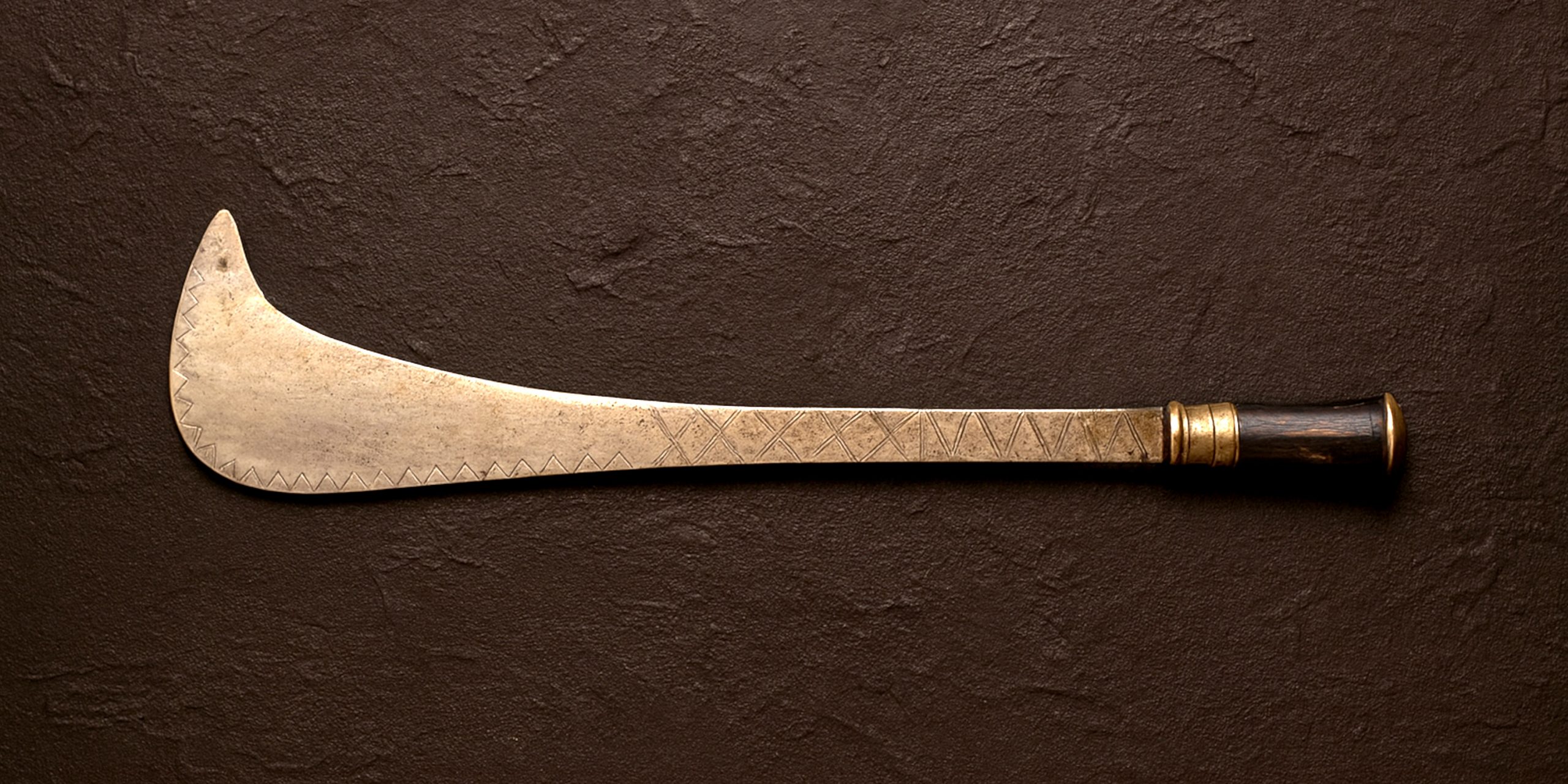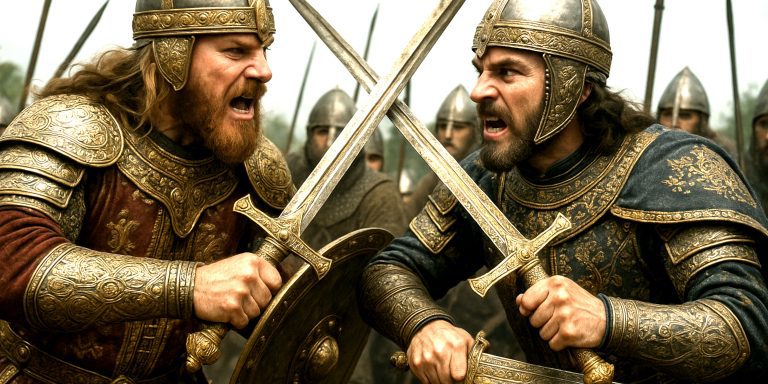
The functional battle sword of the old Kingdom of Dahomey was built for close combat, not ceremony. Its form shifted across regions and workshops, yet it remained a practical working weapon shaped by the needs of a highly disciplined West African military system. These blades served infantry, royal guards, and elite Dahomey women warriors who fought with a mix of firearms, short swords, and heavy chopping weapons. The sword sat between machete and sabre in purpose, giving soldiers a tool that cut cleanly through vegetation as well as armour and shields.
Specification
Below is a general overview. Surviving examples vary, since local blacksmiths forged them to suit specific fighters.
| Feature | Typical Details |
|---|---|
| Overall Length | 45 to 75 centimetres |
| Blade Type | Broad, single edged, often with a flared or leaf shaped profile |
| Blade Material | Locally smelted iron, sometimes pattern forged through repeated folding |
| Hilt | Wood or horn grip wrapped in leather or plant fibre |
| Guard | Minimal or absent, sometimes a small iron bar |
| Balance | Forward weighted for strong chopping power |
| Scabbard | Leather sheath, often plain and functional |
History And Evolution
The sword grew out of older regional blade forms used across present day Benin, Togo, and Nigeria. Early versions resembled agricultural tools that had been adapted for war, which was common in West African armouries where practicality mattered more than ornament.
When Dahomey expanded its military structure in the seventeenth and eighteenth centuries, standard patterns began to appear. These blades complemented muskets supplied through Atlantic trade, giving soldiers reliable close quarter weapons when volleys ended and lines collided. Royal workshops in Abomey produced versions with stronger points and reinforced spines, which helped the army when fighting Yoruba states, Oyo cavalry, and coastal rivals.
By the late nineteenth century, European weapons became more available. The old blades remained in service, but firearms took priority. Even so, the Dahomean sword stayed part of military gear until the fall of the kingdom in the 1890s.
Advantages
- Strong cutting force thanks to forward balance
- Simple to produce in large numbers
- Durable in harsh environments
- Effective against light armour and shields
- Easy maintenance using local materials
Disadvantages
- Short reach compared with sabres or spears
- Minimal hand protection
- Less effective for thrusting compared with European style swords
- Quality varied between blacksmiths
- Could feel heavy in prolonged combat
Comparison With Similar Weapons
| Weapon | Region | Strengths | Weaknesses |
|---|---|---|---|
| Dahomey Battle Sword | West Africa | Heavy cutting ability, rugged design | Short reach, limited thrusting |
| Yoruba Ida | West Africa | Versatile and well balanced | Slightly lighter impact than Dahomey types |
| Congolese Ngulu | Central Africa | Distinctive forward curve, powerful slashing | Not ideal for thrusting or precision |
| European Short Sabre | Europe | Good hand protection, stronger thrust | Less suited to heavy chopping cuts |
Legacy
The Dahomey battle sword stands as a reminder of a disciplined and often misunderstood military culture. It reveals the pragmatic approach taken by Dahomey’s armourers who produced weapons suited to local fighting styles rather than imported ideals. Today it provides a clear link to the training systems of the kingdom’s soldiers, including the renowned Dahomey women warriors whose discipline impressed and unsettled European observers.
The sword also holds a place in modern popular memory through museum collections, living history studies, and renewed interest in West African martial traditions.
Where To See
- Musée du Quai Branly, Paris, holds several Dahomey blades from nineteenth century collections.
- The British Museum, London, displays examples collected after the French invasion of Abomey.
- National Museum of African Art, Washington DC, occasionally features Dahomey edged weapons.
- Abomey Historical Museum, Benin, preserves regional weaponry and royal artefacts linked to Dahomey’s kings.
Collectors Guide
Dahomey swords appear in auctions, though authentic examples require careful provenance checks. Many pieces on the market are later ceremonial types, tourist reproductions, or blades from neighbouring cultures incorrectly labelled.
What Collectors Look For
- Strong iron blade with visible age
- Grip materials consistent with nineteenth century workmanship
- Provenance linking to royal workshops or French colonial collections
- Signs of functional use rather than decorative production
- Original sheaths, which are uncommon but increase value
Auction Prices
Below are typical ranges based on recent specialist sales.
| Condition | Typical Price Range |
|---|---|
| Museum Grade, Provenanced | 1,500 to 3,500 GBP |
| Good Condition, Likely Nineteenth Century | 600 to 1,200 GBP |
| Fragmentary Or Unprovenanced | 200 to 400 GBP |
| Modern Reproductions | 30 to 100 GBP |
Buying Tips
- Request documentation, especially if provenance mentions colonial expeditions.
- Compare blade shapes carefully since Dahomey weapons have distinctive profiles.
- Avoid over polished pieces because patina loss reduces historical value.
- Seek expert restoration advice before cleaning old leather scabbards.



